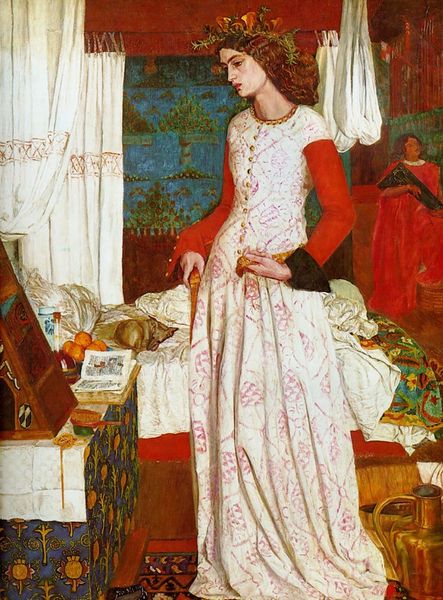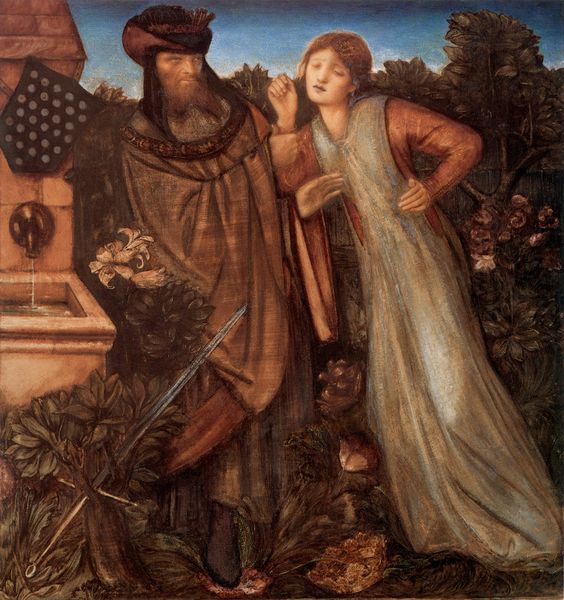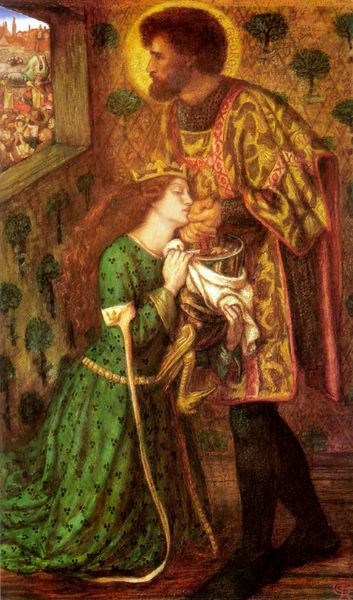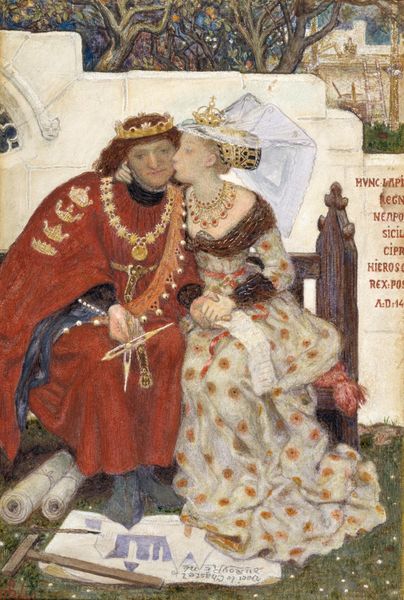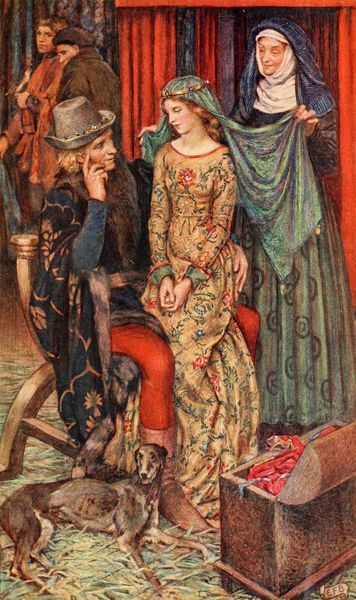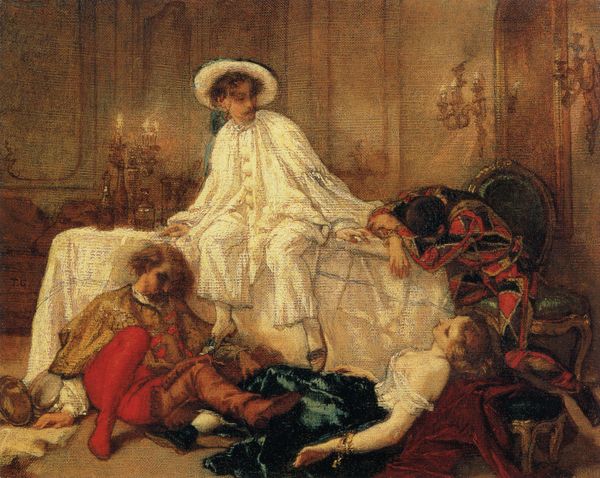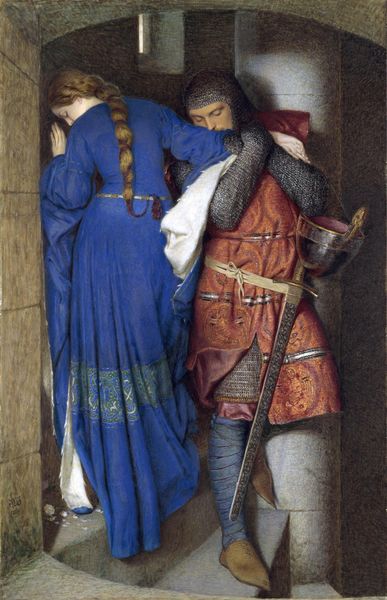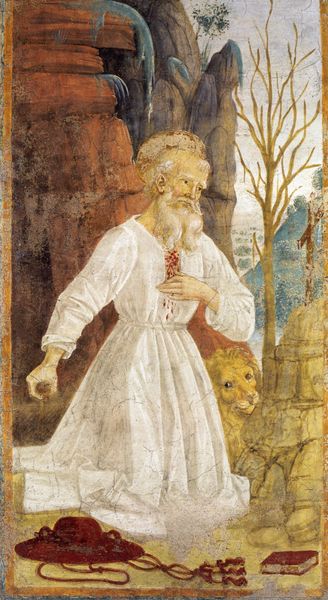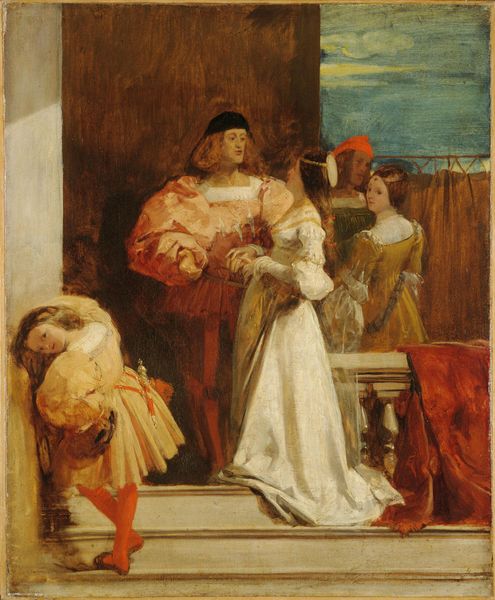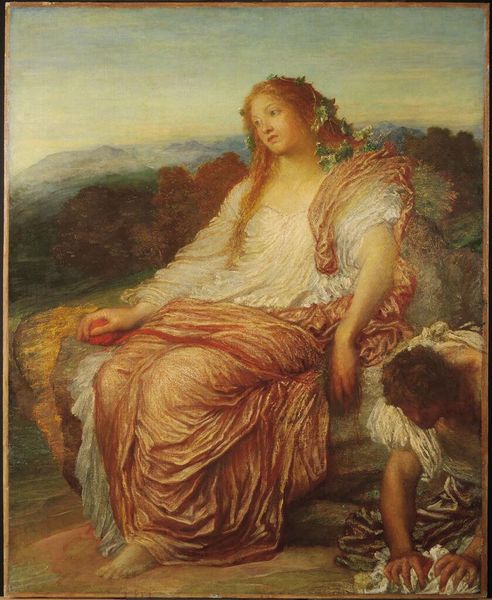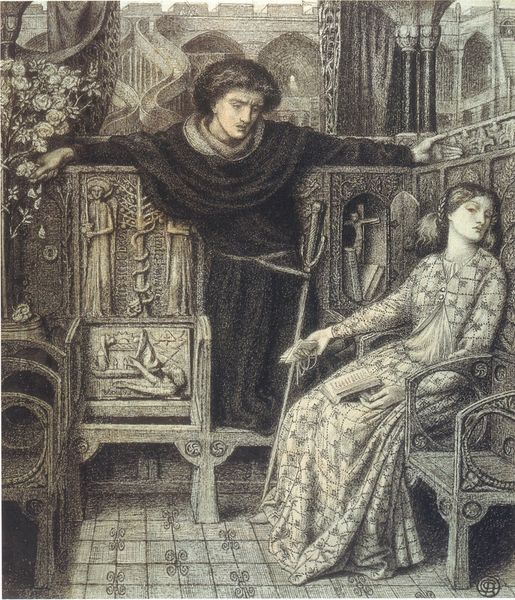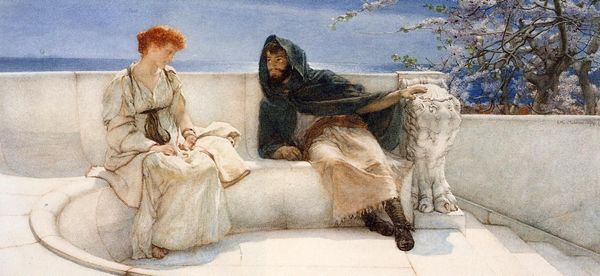
Dimensions: 80 x 91.4 cm
Copyright: Public domain
Curator: Here we have Dante Gabriel Rossetti's "Found," created in 1881. It’s a compelling piece rooted in the Pre-Raphaelite movement, now residing at the Delaware Art Museum. Editor: It strikes me as profoundly melancholic. The figures are caught in a tense tableau, their expressions laden with unspoken stories. The colors are muted, heightening the sense of restrained emotion. Curator: Indeed. Rossetti often intertwined personal and societal narratives in his work. "Found" grapples with the themes of fallen womanhood and redemption, subjects common in Victorian England. The man, a rural drover, rediscovers his former lover, now a prostitute, in London. Editor: The composition reinforces this drama. Note how the vertical lines of the brick wall and figure of the drover sharply contrast with the slumped figure of the woman, emphasizing her helplessness. There’s a deliberate disruption in the pictorial space, adding to the unsettling atmosphere. Curator: Absolutely. The presence of the calf, bound and trussed for market, serves as a powerful symbol. Many believe it to symbolize the woman’s own entrapment and loss of innocence. The placement of such symbolic features underscores Rossetti’s keen understanding of social commentary. Editor: The symbolism extends to Rossetti's use of color. The overall earth tones dominate the scene, however the contrasting bright shade of red in the woman’s hair sharply pulls the eye, enhancing the central point of drama, thereby signifying passion and possible danger. Curator: Interestingly, the painting remained unfinished at the time of Rossetti's death. The urban background is only suggested, creating a sense of incompleteness that mirrors the unresolved nature of the encounter. He labored on the painting for decades. It mirrors many Pre-Raphaelite ideals about art, commerce and class anxieties. Editor: Looking again, there is a deliberate contrast in textures. The roughly sketched background only heightens our sense of the subjects trapped inside Rossetti’s close scrutiny and meticulous paint handling. It emphasizes an attention to detail but almost theatrical emotionality, especially with her gesture and plea. Curator: I’m struck, as always, by Rossetti’s capacity to infuse a personal narrative with broader social implications. It really opens questions about morality and how gender shapes perceptions and lives. Editor: For me, it is about how an artist’s formal choices heighten emotional drama within the picture, a frozen narrative rendered visible through light, form and skillful arrangements of tone and textures.
Comments
No comments
Be the first to comment and join the conversation on the ultimate creative platform.
